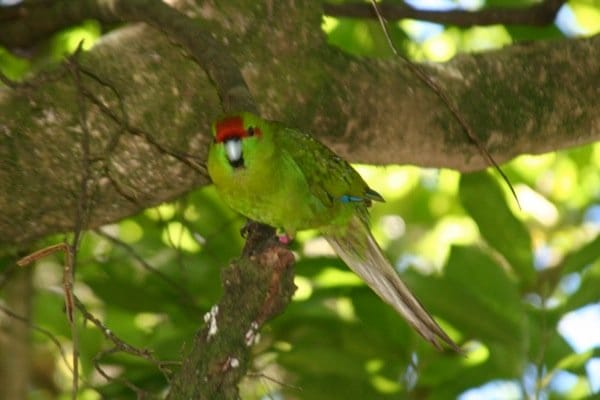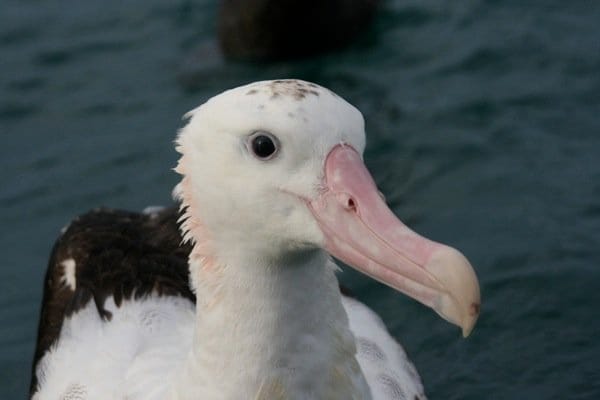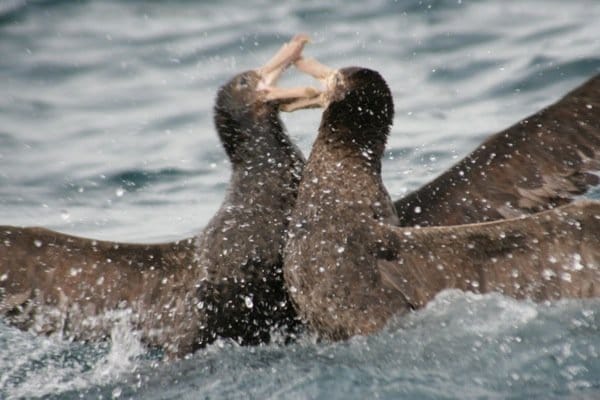
Back in January of last year I said in my list for the year that I’d be happy if I hit 300 birds in 2012. My final number for last year was 402 as it turns out. So I guess the question is “am I happy?” Well yes, I guess. But perhaps a better question would be “is that why I am happy?”
Last year I saw this Antipodean Albatross. Why wouldn’t I be happy?
That’s actually a harder question. The equation is simple, surely, if seeing birds makes me happy, then surely lots of birds makes me lots of happy, right? Well, not quite. For starters, the enjoyment of birds is not actually directly correlated with enjoyment. Sure, seeing more birds is usually good, but unless you are a lister at the exclusion of all else then adding another bird doesn’t make you incrementally more happy forever.
This Painted Stork made up .25% to my overall birding happiness last year.
A closer look at my year list from last year would actually show you something rather interesting about my birding last year. For the vast majority of the birds I saw last year, I saw them for the first time either in January or December. I honestly added less than 20 birds between February and November. This is mostly because I started the year in tropical Queensland and ended the year in Thailand and the UK. In one insane day in Thailand I added 96 birds to my year list! So, if adding birds to the list was crucial to my birding happiness then I was deeply unhappy for most of the year.
This Red-crowned Parakeet was one of the birds I saw throughout the year.
Well, no, but yes? The middle period of the year was very barren for new species, and this being New Zealand for birds in general. The reason for this drought was simple, I was out of work and moving beyond the confines of Wellington was generally not possible. Now on the one hand I love diversity of birds, and spent a lot of time wishing I could travel to see different birds. I’d pour over my travel books imagining the birds I could see elsewhere. But on the other hand the lack of new species hides the fact that I spent time with my local birds (and boy did I have a lot of spare time last year), including such wonderful birds as Kaka, Tui, Paradise Shelducks and Fluttering Shearwaters.
And let’s be honest, birding droughts do make the good times better. That day in Thailand was all the sweeter for not having done much birding over the year, like a long cold gulp of G&T after a hot dusty day. And this year had some outstanding birds. I love storks, cranes, bustards, hoopoes, pittas and bee-eaters, and I got plenty of them. I have a deep love for members of the babbler family (or families now) and so the ten minutes I spent with a pair of Chestnut-crowned Babblers was heaven. And I got a bunch of new families this year too, Australasian babblers, boatbills, ioras, painted-snipe and best of all, a bird-of-paradise. All told my year netted me an impressive 136 lifers (I think – with my sloppy note taking knowing if something is a lifer is tricky!).
 The Chestnut-capped Babbler was a real highlight for this babblerophile. Image by Peter Ericcson.
The Chestnut-capped Babbler was a real highlight for this babblerophile. Image by Peter Ericcson.
And this year? Well, I won’t make any predictions or even any particular goals. I do have at least one big trip planned, not quite sure where yet but my favourite continent, Africa, is a contender. And I have the aim of spreading out my birding around New Zealand a bit better. Now that I have a steady income I can make trips to other parts of the country, and I’ll take those chances. And I’ll keep the year list – because the list spurred me a little and I sometimes need that.
Northern Giant Petrels are some of the great birds I need to move around New Zealand to see.

















An interesting look back over 2012! Now you have that big decision to make on where to go to in 2013! 🙂